
Related
People of all ages and backgrounds were on hand for Wednesday’s Occupy Wall Street march that drew tens of thousands into the streets in downtown New York City. Democracy Now!’s Amy Goodman reports from the street to bring you some of their voices. [includes rush transcript]
Transcript
AMY GOODMAN: Voices of the students who joined with the tens of thousands in Foley Square in downtown Manhattan, surrounded by the courts, as union leaders gave their speeches, then people marched from the square to Liberty Plaza, where the encampment called Occupy Wall Street has been for the last three weeks.
PROTESTERS: Whose streets? Our streets! Whose streets? Our streets!
AMY GOODMAN: We’re standing in the march from the union rally to the Occupy Wall Street encampment. We’re somewhere along Broadway. Thousands, tens of thousands of people are marching. What’s your name?
ROBIN KAPLAN: My name is Robin Kaplan.
AMY GOODMAN: And where are you from?
ROBIN KAPLAN: Originally I’m from Canada, but I’ve been living in the States for two years now.
AMY GOODMAN: What do you think of the media coverage of this?
ROBIN KAPLAN: I think the media coverage is focused on the incoherency of the message. My thoughts on this is that the American people have been asleep for the last 35 years. This is them finally figuring out how to collectively organize, how to move together as one. And then, as time progresses, people will become more organized and start forming different factions and having more singular demands.
AMY GOODMAN: What is the sign you’re saying say—what is the sign you’re holding?
ROBIN KAPLAN: My sign says that we’re approaching a trillion dollars in student debt. We have a reported rate of 9.1 percent unemployment, which is pretty false as it is, and that is a huge problem.
PROTESTERS: Tell me what democracy looks like! This is what democracy looks like! Tell me what democracy looks like! This is what democracy looks like!
DR. ARASH NAFISI: My name is Arash Nafisi.
AMY GOODMAN: Uh-huh, and where do you work?
DR. ARASH NAFISI: I also work at Montefiore Medical Center in the Bronx.
AMY GOODMAN: What kind of doctor are you?
DR. ARASH NAFISI: Internal Medicine.
AMY GOODMAN: And what’s the sign that you’re carrying?
DR. ARASH NAFISI: My sign says, “Doctors against poverty.”
AMY GOODMAN: So why are you joining the Occupy Wall Street encampment?
DR. ARASH NAFISI: This is just one part of the struggle, one part of the fight. We believe in healthcare for all, just like people here believe in housing for all and all sorts of other rights.
AMY GOODMAN: And what is your name?
DR. MAGNI HAMSO: My name is Magni Hamso.
AMY GOODMAN: Where do you work?
DR. MAGNI HAMSO: I also work at Montefiore Medical Center.
AMY GOODMAN: Uh-huh, and what’s your specialty?
DR. MAGNI HAMSO: I’m in primary care.
AMY GOODMAN: So, why is a doctor coming down to Occupy Wall Street?
DR. MAGNI HAMSO: We work in the South Bronx, which is one of the poorest congressional districts in the country, and I think we see income inequality every single day, so…
AMY GOODMAN: How does it affect people’s health?
DR. MAGNI HAMSO: I mean, people are unable to afford their medicines. I mean, I think just people aren’t able to deal with their health issues, because they’re dealing with housing, they’re dealing with jobs.
RACHEL DROLET: I’m Rachel Drolet. I’m a nurse at Columbia Presbyterian Hospital. I’m with the New York Nurses Association. And we’re constantly understaffed. We constantly run out of supplies. And when you look at just the dichotomy of where the money is in society, it just doesn’t make any sense at all, and we’re—you know? I mean, we’re affected all the time. We work 12-hour shifts. It’s, you know, frequently not safe. It’s frequently—for the patients or for the nurses and for the doctors. And, you know, it’s an outrageous situation. It’s an outrageous economy and society that we live in, where one percent has so much, and 99 percent are fighting for scraps.
INTIKANA: My name is Intikana, and here’s a piece I have free for the people.
[rapping] Change comes with time
It’s not an action, it’s a process
It’s more than just marching
It’s what you do after the protest
It’s giving back to the hood
That makes you conscious
What makes an activist activate
When they graduate
With a bachelor’s
Over masters from the masters
With the masses screaming “master”
Master of all the answers
When they’ve mastered it
We could try to shape the world
If we could try to change how we imagine it
It’s OK to make mistakes
But if freedom’s what they say
We don’t have time to waste.
FRANCES GOLDEN: My name is Frances Golden. I’m Mumia’s literary agent. My sign says, “I’m 87 and mad as hell.” And I’m mad as hell with what the rich are doing to the poor. They’re taking it all, kicking people out of their homes, losing their pensions. If we don’t get all mad as hell, we’re going to be a fascist state. And look at what’s happening today. We’re fighting back. And that’s what’s going to make the difference.
AMY GOODMAN: Can you tell me about your sign? What does it say?
PROTESTER: “Lost my job, found an occupation.”
AMY GOODMAN: And what does that mean?
PROTESTER: Well, actually, what I look at this event more is in the terms of popular education. So I think that as—protest is a form of popular education. So it’s thinking about what are the alternatives to employment? When we’re talking about jobs, we’re not talking a lot about what the alternatives are.
PROTESTERS: Get up! Get down! There’s an occupation in this town!
SELMA EL-SENCHOURI: My name is Selma El-Senchouri phon.. I’m Egyptian American. And what the Middle East has shown us is that people, when they come together for one cause, are able to really impact and effect change. And part of the Arab revolution, the youth, there was a great momentum of youth. And I feel like that has been mobilized the world and brought globalization to a whole new world, where ideals and values are starting to take over instead of corporations and other things. So, I feel there’s a transfer of energy, a positive energy, and I hope that the momentum continues.
MANNY: My name is Manny. I’m with an organization called FIERCE. And we work to build the leadership and power of lesbian, gay, bisexual, transgender and queer youth of color here in New York City between the ages of 13 to 24. And today we marched with a contingent of community groups, community groups who are doing amazing work in the city from the ground up, people who are in the communities, who are working for our rights in housing, who are working for safe access to public space, who are working for education and jobs and organizing immigrant communities to fight for their rights, as well. And so we all gathered together and really wanted to bring a people’s presence down to Wall Street today.
JULIAN: My name is Julian, and I’m passing out fliers talking about decolonizing Wall Street, because this is occupied land. It says, “As the world watches up occupy Wall Street, let’s not forget the history of occupation on which this street was built. In 1685, the Dutch West India Company enslaved African peoples, after failing to effectively enslave American Indians, to construct a wall, Wall Street, that barricaded the land white men had seized from Native peoples. The Dutch called their colony New Amsterdam and needed to secure it from the indigenous who were fighting to take back land they had sustained for thousands of years. They were also protecting it from British colonizers. The wall secured space for white men to disparately trade shares and bonds until they formalized the practice through the founding of the New York Stock Exchange in 1792.”
AMY GOODMAN: Can you tell me your name? And what is the sign that you’re holding, written in paint on a piece of cardboard?
PROTESTER: It says, “I will believe corporations are people when Texas executes one.”
AMY GOODMAN: Some of the voices of the streets from the rally to the protest to the march, tens of thousands of people ultimately ending up at the Occupy Wall Street encampment just around the corner from, yes, Wall Street.
This is Democracy Now!, democracynow.org, The War and Peace Report. I’m Amy Goodman, with Juan Gonzalez. Juan, you wrote a great column about the significance of this rally yesterday in New York City, the union rally.
JUAN GONZALEZ: Yeah, well, in yesterday’s Daily News, I pointed out the fact that people have forgotten it was 41 years ago this year when there was an antiwar march in the Financial District down on Wall Street of thousands of young people, college kids, that was brutally attacked by construction workers. So bands of construction workers rampaged through downtown. They actually invaded City Hall, because then-Mayor Lindsay had ordered that flags be flown at half-staff because the Kent State massacre had just occurred. And the construction workers literally, up and down the Financial District, brutally beat scores of young people. And now you have the situation, the irony, that the labor movement now, many of the unions, at least, have joined together with this new generation of young protesters, and instead of seeing themselves as apart from them, have seen the need to unite with them and to follow their example and to insist, in this coordinated voice now growing, that the American people are really outraged about what has happened with Wall Street and with this financial crisis and the lack of accountability that’s occurred in the society. So I think it’s a major shift. Now, the construction workers’ unions weren’t there in the march, but at least they weren’t organizing to attack the protesters. And so, I think this is a major change, certainly, for the labor movement in the United States.
AMY GOODMAN: We’re going to break and come back to Naomi Klein, who just came up from Washington, D.C., where she had been involved with a major protest, which we’ll talk about, but joined in the streets and went over to the Occupy Wall Street encampment. Stay with us.

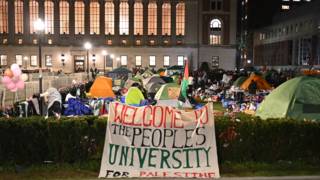
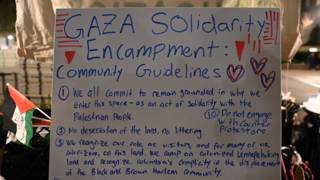
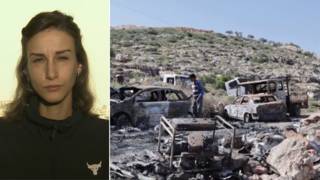
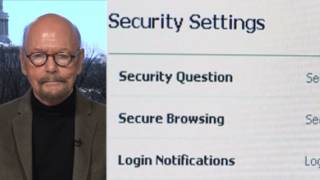





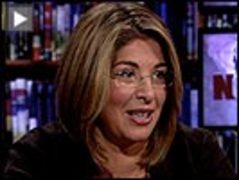
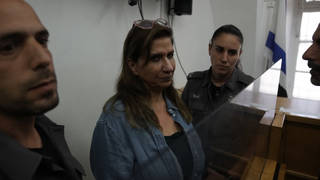
Media Options